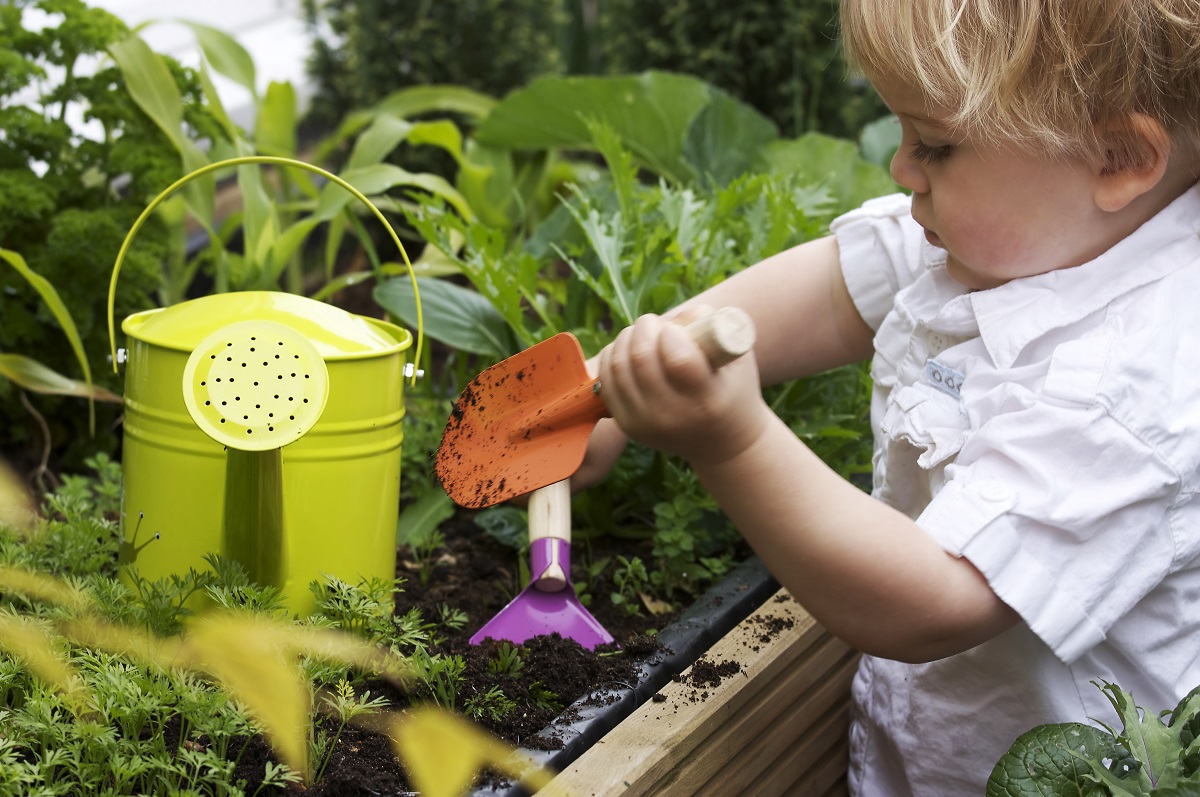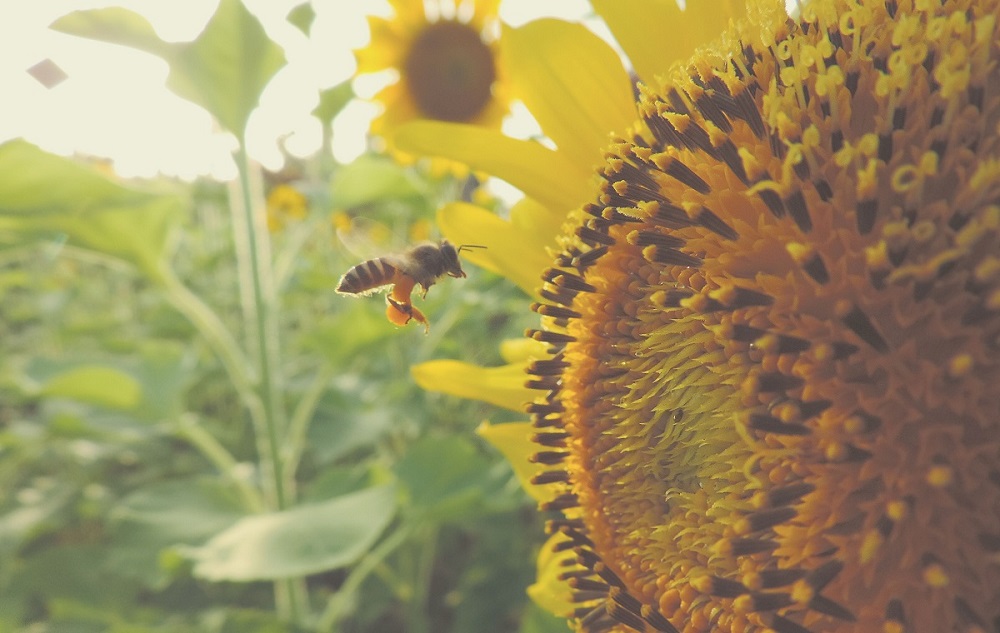Blog - Summer Gardening with Kids Made Simple

Summer Gardening with Kids Made Simple
It’s not hard to imagine the joy on young children’s faces when they’re allowed to play in the dirt…the pride in their eyes when they take a bite of something yummy that they grew themselves…the excitement they feel to get your undivided attention…
But too often, kids feel unmotivated to get outside.
Adults interested in gardening might feel daunted by the task of doing it with their kids.
That’s why the secret to gardening with kids—and reaping all of the benefits—is to keep things simple.
Let’s look at why the effort to garden with children is so incredibly worth it, and how busy parents can make this activity enticing, challenging, and rewarding to kids of any age.

What happens when kids grow their own food
Many studies have been done examining how children’s relationship to food changes after their involvement in gardening at home, at school, or in their community. Children who have grown their own food are:
- More likely to eat their fruits and vegetables—regardless of how or where they were grown
- More likely to score well on science tests, due to an increased understanding of cause and effect, project planning, and nature
- More likely to garden in the future as adults (leading to improvements in health and a decrease in stress)
Children also learn the responsibility that comes along with caring for something. They develop an appreciation for and respect for nature. Further, the physical activity is good for their exercise needs in the short term. Gardening also gets kids accustomed to being physically active in the long term.
Getting kids to eat healthy is a huge battle for most parents.
Breaking that barrier alone is worth attempting a garden this season. The reason why gardening works is that it normalizes vegetables. How many times have you seen a kid curl up their nose at a vegetable?
“It’s weird.” “I don’t like it.” “It tastes funny.”
As a culture, we’re pretty disconnected from the fact that food comes from the earth. It comes from boxes, right?
Children who are exposed to where fruits and vegetables come from are simply more comfortable and even excited about eating them. Without you having to nudge them, they’ll just go ahead and take a bite! Add in kid ready recipes and they’ll have a sense of ownership and pride at mealtime.
Flower gardening: not just about appearances
Not everyone has an interest in growing food. You can keep food gardening really simple with just a few strawberry plants or sunflower seeds planting along a fence. Or start small with growing flowers and graduate to vegetables and fruit trees that require a bit more care.
There are plenty of benefits to flower gardening, and starting off young builds a lifestyle and lifetime of benefits.

Children who garden:
- Spend time outdoors
- Spend time with family
- Engage their creativity
- Learn to enjoy physical work
- Feel increased self-confidence
That’s why the best way to keep summer gardening projects simple is to go with the flow. What is your child most interested in? Bonsais or butterflies or broccoli?
Undoubtedly, you can come up with a summer gardening project for kids at any grade level. Whether they grow flowers or vegetables, take it to the next level by showcasing the flowers in a beautiful vase and enjoying a great recipe together!
Keeping kids excited while growing their skills
Age appropriate gardening is easier than you think. No one knows your child better than you, so go with your own intuition on which of the below ideas they might like.
Ages 5 & below
You can’t bring a toddler or young child in the garden without considering safety! Be sure that young children are using appropriately sized gardening tools, aren’t able to access sharp tools or harmful chemicals, are protected from the sun, and that they stay in sight. Choose to garden organically as much as possible.
Now onto the fun part: it’s so easy to turn little kids into BIG helpers. They just love being your sidekick. Here are easy tasks they can assist with:
- Watering plants from a watering can or a hose turned to low pressure
- Examining leaves for dry spots, mold spots or pests
- Identifying ripe produce (tell them to ask before they pick!)
- Removing dead leaves or flowers
- Talking to plants to help them grow—hey, why not?
- Planting from seeds

Ages 6 – 12
Elementary school children are still pretty open to being helpful (especially with something fun like gardening), but they might need a bit more incentive to stay committed.
It’s wise to give them their very own project. This will be theirs and theirs alone. Maybe it’s…
- One corner of the garden
- A special tree
- A single container, bed, or box
The idea here is to not separate out a task (ex: water every Tuesday), because that would feel like a chore. Rather, the point is to give them an area that’s all their own.
Allow them to choose which plants go in that section of the yard or in that container, so that they can experiment with anything they like. This special “pet project” will make it more enjoyable for them to contribute to gardening tasks as a whole. Let them pick out seeds or starter plants to begin their little garden, add homemade markers or even add a garden sign with your childs’ name.
Ages 12 & up
Getting preteens and teens excited about gardening is actually pretty easy. You have to challenge them to do something new without teaching them to do something new (doesn’t it just seem like they’d rather learn from anyone other than you?).
Here are some ways to keep them engaged:
- Design and planning – Whether it’s a vegetable garden or a rose garden, every garden needs to be designed. Things to consider are the layout of the garden, the requirements of the plants, and the appearance of the plants next to one another. Give teenagers free reign to research plans for garden design or strategic container combinations. With preteens, you can ask their input or have them help you make the final decisions.
- Advanced gardening techniques – Have older kids help you transplant large plants, take cuttings to give as gifts, control soil conditions, or grow challenging plants.
- Social causes – Your teen may be more interested in a community gardening project that serves the local food bank than watching over your lovely tomatoes on the back deck, and that’s okay. Plant-a-tree events, flower gardening with seniors, or volunteering at non-profit farms and gardens might be more rewarding for teens than gardening at home.
Treating gardening as a chore or a hobby?
Should gardening be treated as a chore or a hobby?
Your best bet is to slyly convince children that they want to participate, but if that doesn’t work, there’s nothing wrong with adding a few gardening tasks to the list of things that must be done to get that weekly allowance. You’ll know what’s best. Just remind them that certain chores are more fun than others, and gardening typically wins out.
With any summer gardening project you might undertake—whether it be the design of new beds or the care of large containers on a small balcony—the secret to involving your kids is to make it fun. Keep things simple, create projects around their interests, and help them stay engaged. And let them get dirty! Consider taking photos each week to document growth and create a scrapbook.
The end result will be delicious food, beautiful flowers, and smiles all around. And hopefully a lifelong interest in gardening and growing fresh food.
No Description
Leave a Comment
You must be logged in to post a comment.